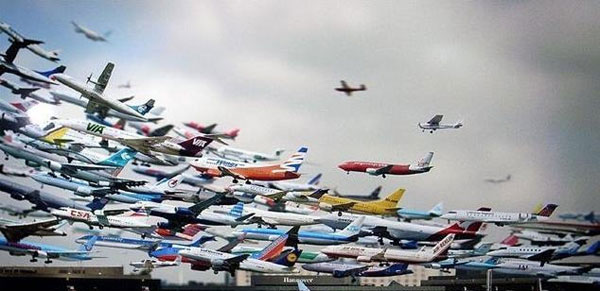European Airlines Struggling with Restructuring Programs

European Airlines Struggling with Their Restructuring Programs
Frost & Sullivan’s Lida Mantzavinou comments on Lufthansa grounded by trade union strike
Lufthansa’s union strike is impacting 98 per cent of the carrier’s flights, with cancellations hitting both short- and long-haul destinations. The half-day strike in March, had affected 40 per cent of the carrier’s flights with cancellations of 700 flights. The union’s reaction does not come as a surprise. Lufthansa had clearly stated its intentions in 2012 with the Score program, targeting 3500 job cuts in order to generate savings of €600 million and revenues of €300 million through other activities. Other European groups such as Air France/KLM and IAG are facing similar issues with the unions reacting to their cost restructuring programs. IAG’s restructuring program is targeting 4500 job cuts to generate €450 million of savings and Air France/KLM’s program is targeting 5000 job cuts to reduce its net debt to €2 billion. Union disputes will be the main challenge that legacy carriers will have to face moving forward with their programs.
The question that is arising is – are these strategies vital for the groups’ survival? Since 2008 the groups have been experiencing losses in millions due to three major challenges: fuel prices that remain at high levels, strong competition from low-cost carriers (LCC) within Europe such as Easyjet and Ryanair that have been generating more than £200 million profits year-on-year after 2009, and strong competition coming from the Middle East from carriers mainly including Emirates, Etihad, Qatar Airways and Turkish Airlines that are expanding strongly due to the availability of cash and the strategic intent to position Abu Dhabi, Dubai, Doha and Istanbul on the global map, feeding traffic from the east to the west and vice versa.
Lufthansa should be implementing multiple strategies to face each of these challenges. The airline can dent its fuel bill by optimising operational performance. In the short term, Lufthansa has implemented a paperless cockpit, going digital and equipping its pilots with the hardware, software and applications to make optimum choices in terms of operational performance. Furthermore, investments on aircraft connectivity will allow optimal operational performance by linking the engines and other aircraft systems to the high bandwidth connectivity for operational data streaming, real-time health monitoring, and maintenance interaction with aircraft systems, thus saving on fuel costs and eliminating maintenance costs. Connectivity in the cabin linked to the in-flight entertainment system will allow the carrier to generate revenues through online advertising and retail spending as well.
Lufthansa can face LCC competition within the region by leveraging on Germanwings operations. Similarly IAG is leveraging on Iberia Express and planning 100 per cent acquisition of Vueling while Air France/KLM is leveraging on Transavia and its other French subsidiaries, Regional and Brit Air.
In the long-haul market Lufthansa can face competition from the Middle East by forming partnerships. A potential partnership with Turkish Airlines can strengthen the carriers’ bottom line. The other groups are also making similar steps, with IAG aiming to cooperate with Qatar Airways and Emirates and Air France/KLM with Etihad. In the West, regulatory environment still restricts cross border mergers as European carriers can acquire only up to 25 per cent shares in a US carrier. This is a hurdle for European airlines that are witnessing acquisitions taking place from Middle Eastern carriers within Europe, e.g. Etihad acquiring 29.2 per cent in Air Berlin, as well as expansion strategies that are aiming to tap into the US market by transferring passengers through Europe to the Middle East and beyond. Air Berlin and Etihad cooperation is an example. Air Berlin is also undertaking a restructuring program aiming at generating €250 million savings through 1000 job cuts. The carrier is restructuring its network introducing new connections to the US complementing Etihad’s network by bringing traffic from the US to Europe that will be transferred to the East through Abu Dhabi.
